Science
With Mrs Esther Dumbleton

Science
With Mrs Esther Dumbleton
National Science Week is very important because it celebrates all the contributions that science has made to our lives and they are many. In the 1950s the women used a copper to boil water and a wringer to wash the family’s clothes. Now it is just a button that is pressed.
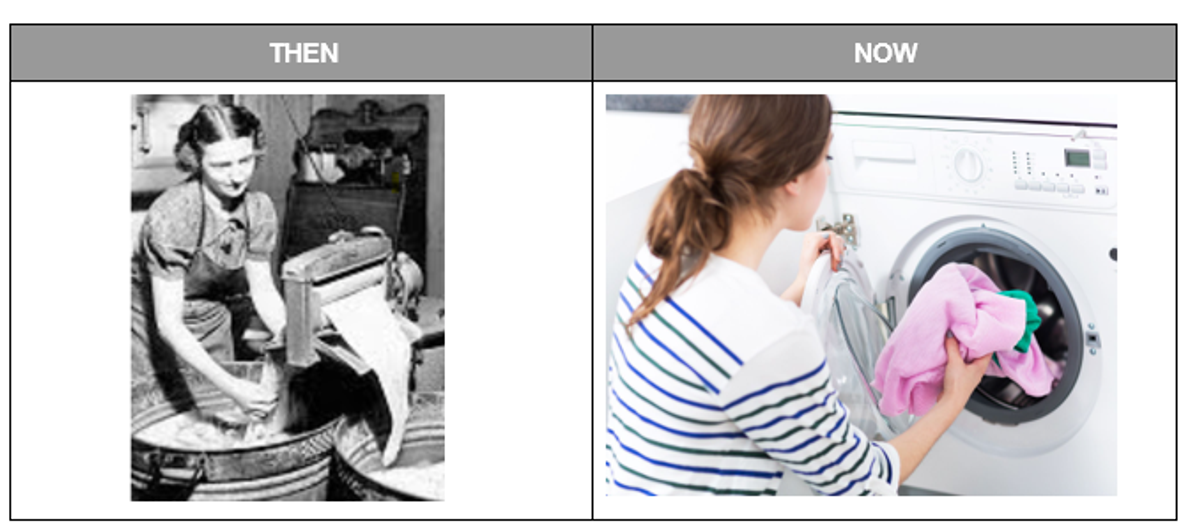

As a science week activity, some year 8 students are acting as a pharmacist to compound a lovely menthol moisturising cream. They got to take their very own cream home to use on their skin and enjoyed the process as they blended menthol into their cream. The students have been studying chemistry so it was a perfectly timed enjoyable activity.
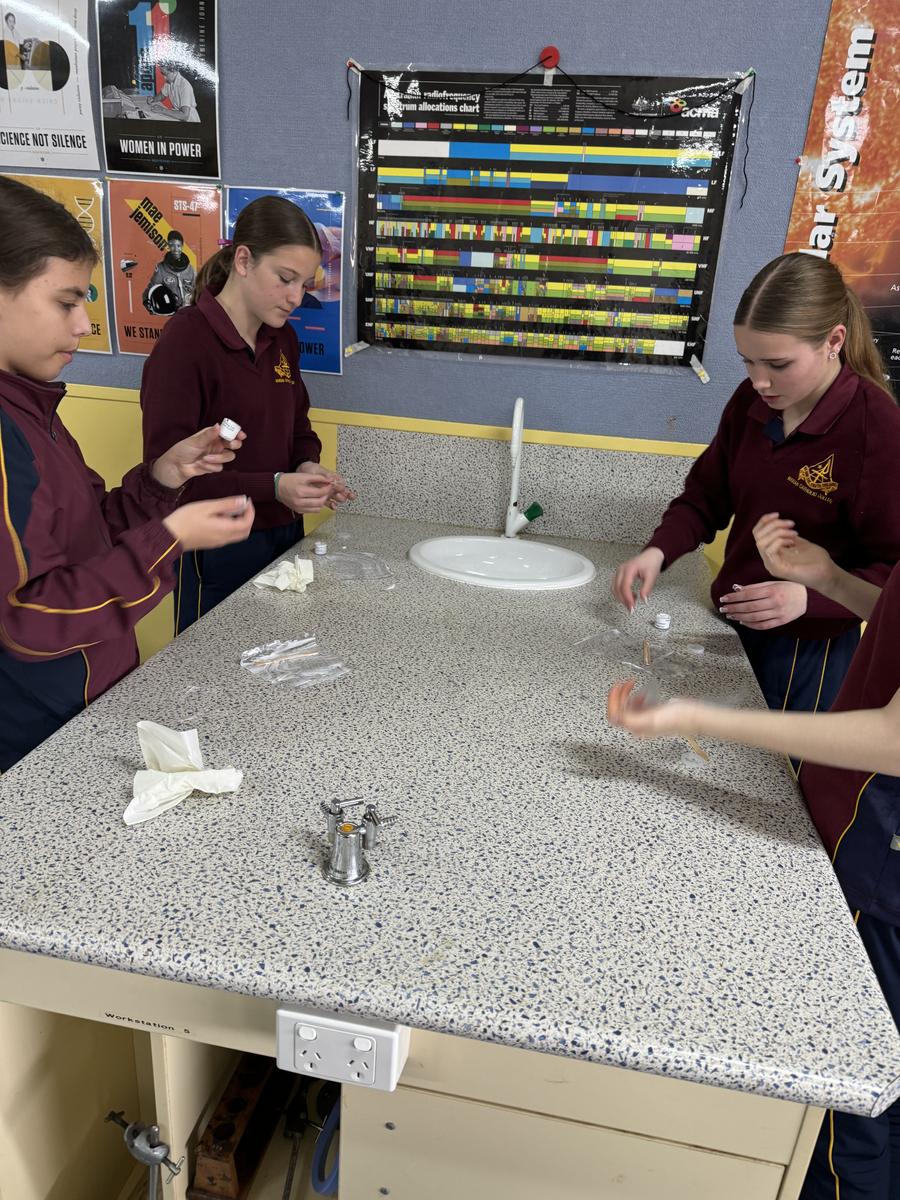
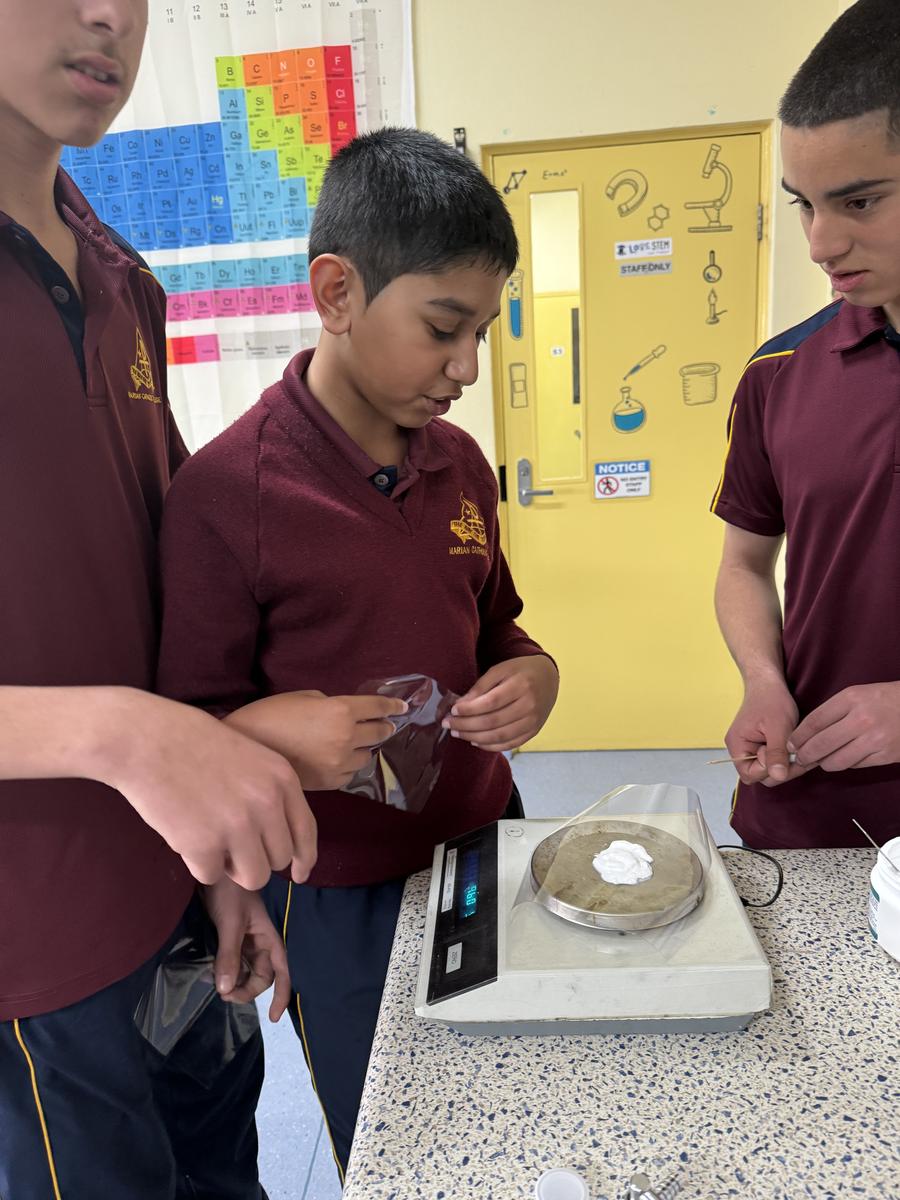




Year 8 have been practising developing ionic formulas. They are really becoming very good at it and are also using polyatomic ions. Some students had the experience of watching the dramatic effect when Lead Iodide precipitates and also saw their own microscale precipitation of Barium sulphate. Students went to the whiteboard to show that they could develop the formula for the reactants and the precipitate product. They are well prepared for a further study of chemistry next year.


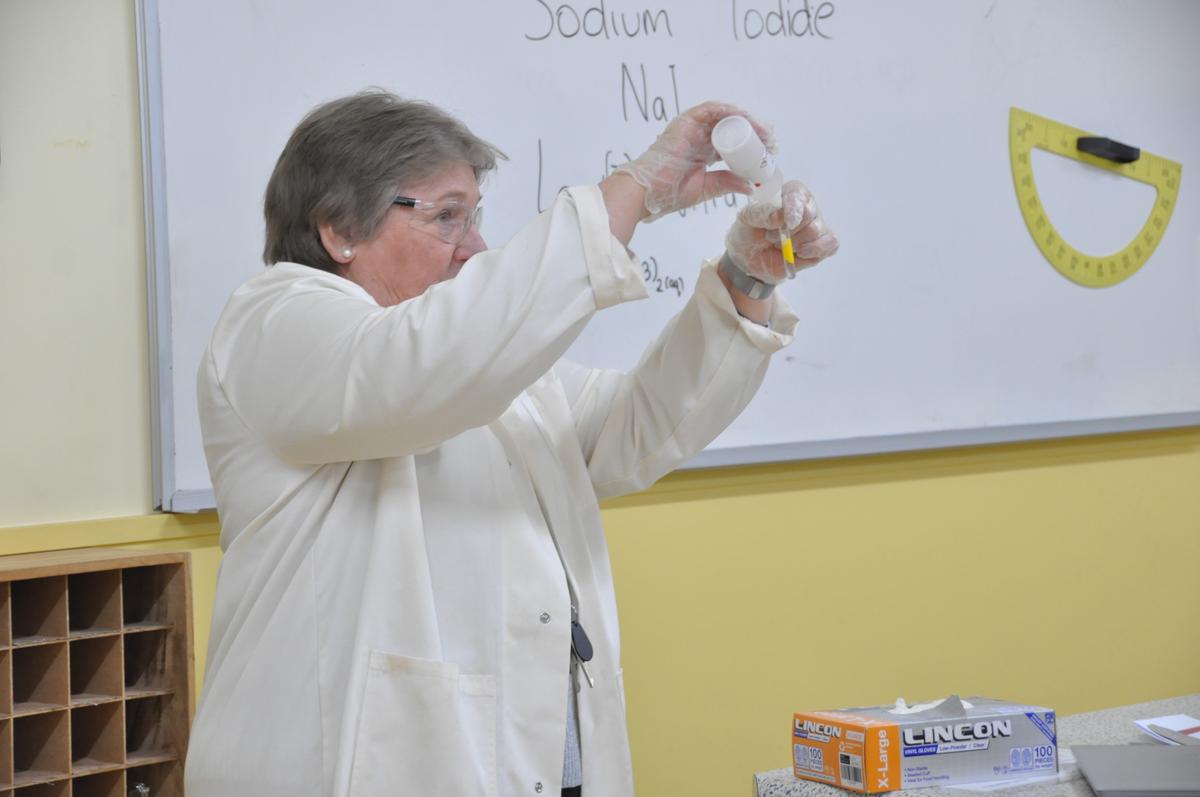


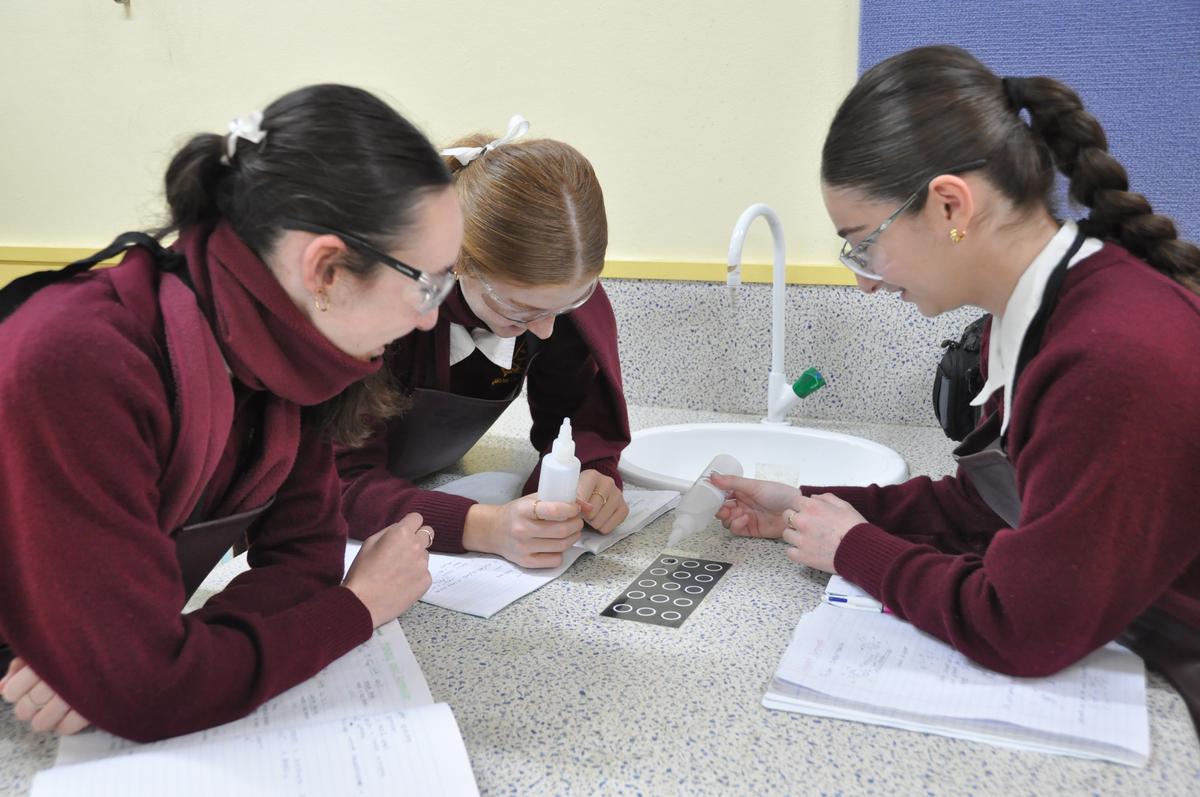
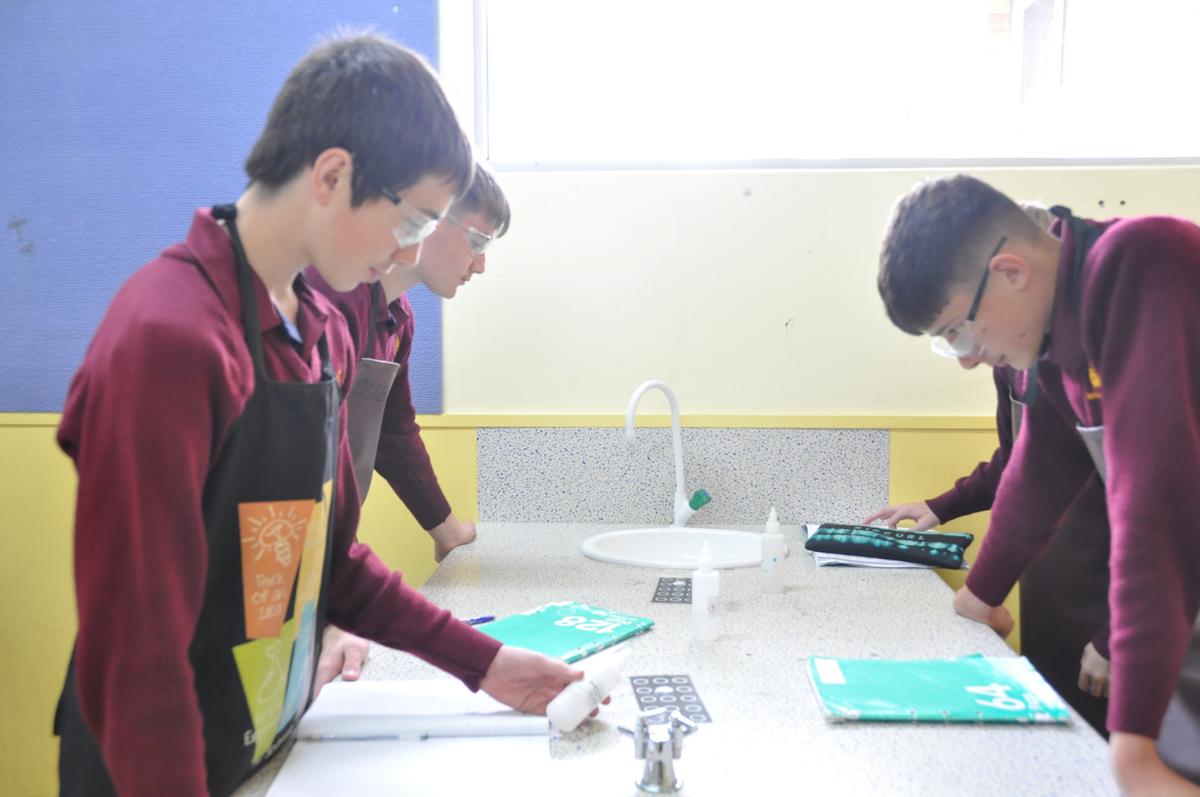
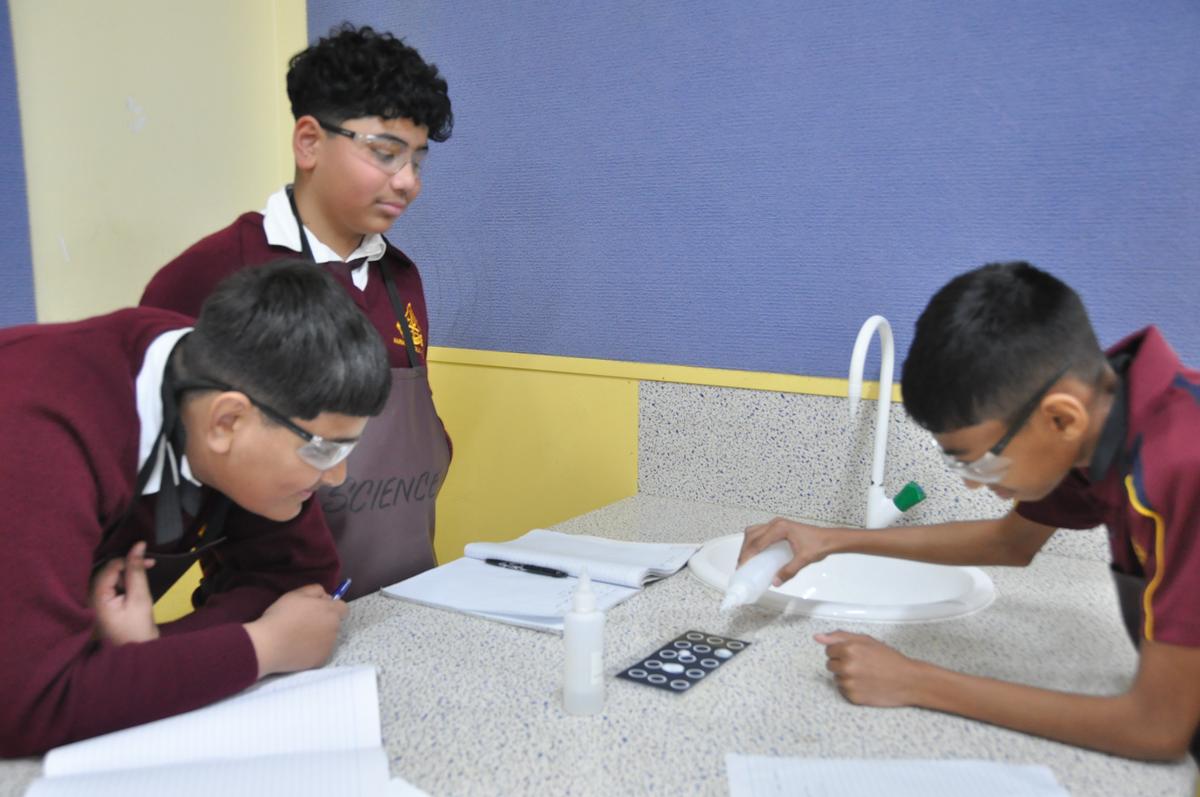
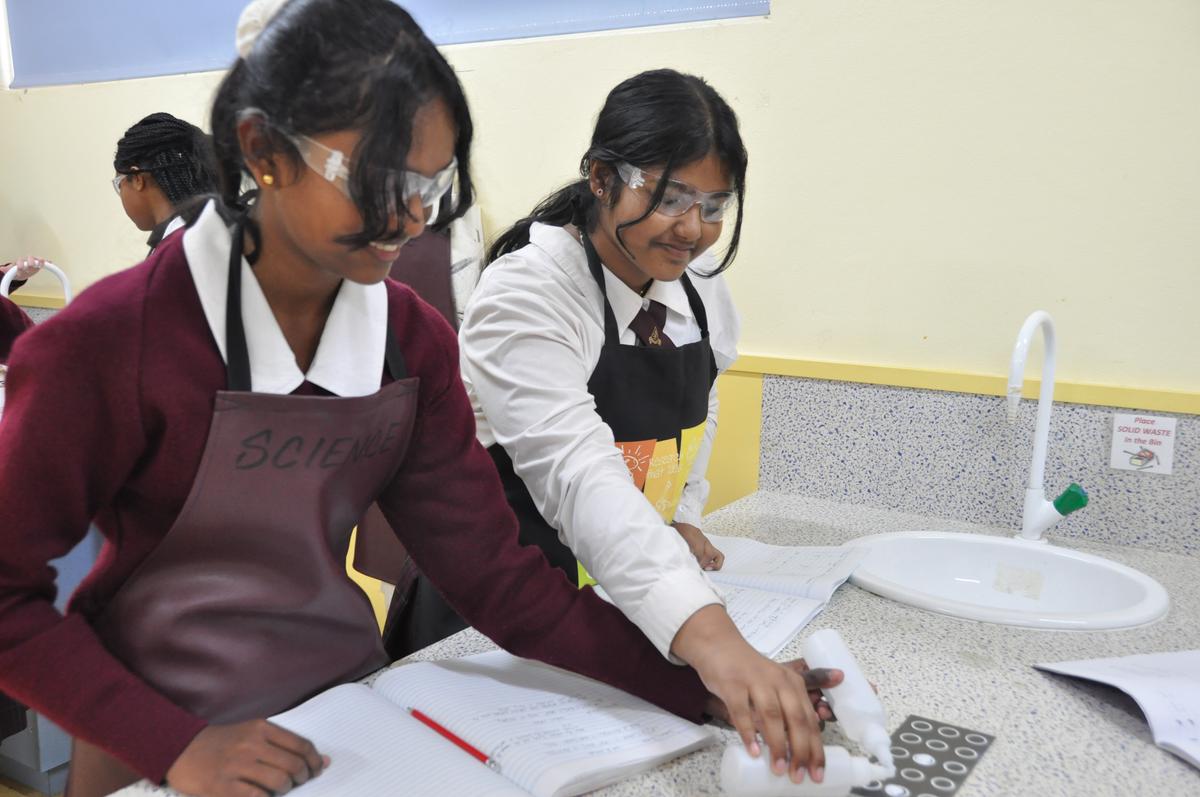









Year 9 started exploring their own exploration into their fitness and body metrics such as resting pulse, pulse after exercise and how long it takes for their heart rate to return to normal after exercise, an indication of fitness. They have yet to determine their lung capacity and blood pressure as they study the systems that operate together in our bodies that make sure things are working well.
Year 7 have started their assessment on making a model of a plant or animal cell. They have been studying cells this term so they have the information and understanding to make a great model. The model can either be 2D or 3D and they will explore the size and scale they use.
Year 10 will explore household acid and bases as they complete their next assessment. They are considering their move into senior study and it is easy to see how relevant science is to everyday experiences.


Dr Chiara Holgate (nee Callipari) presented to Year 9 and Year 10 girls this week on “Girls in Science”. Her presentation outlined her journey from Marian Catholic College to UNSW to study mechanical engineering. She spoke of not having any idea of what she liked when she chose this course and soon realised that she was not very happy on that path so switched to a civil engineering degree. This took her in many interesting directions to meet many interesting scientists and visit places overseas to meet and discuss so many ideas. She explained her Doctorate and what she found out about the signs that a drought was about to break in Griffith. I know that next time Griffith is in drought, I will know exactly where to look to see a sign.
She spoke about scholarships that are available and that sometimes one can think they are not good enough but you have to try to find out what you really want to do, you love doing and that you can be passionate about. All in all, it was a wonderful time to sit, listen, reflect and be inspired.
Year 11 students are trying hard to complete the preliminary courses and study before their exams in Week 9. They are working well and understanding the hard work necessary to succeed. It is also very important to realise that it is consistent hard work that helps and not the last minute all nighters. The chemistry class was in the lab looking at redox reactions and the Daniel cell. This is the chemistry of batteries where chemical energy is converted to usable electrical energy and they all produced some power!
Well, the flowering pear trees that line the campus are coming out in blossom because they think it is spring. The weather is especially nice to enjoy the outdoors so the Year 9 students will enjoy their time outside collecting data over the next two weeks.
I hope you are enjoying it too.
Best wishes
Esther Dumbleton ( Leader of Learning, Science)
We did it! We made earthquakes! I saw them on the seismometer feed! They were huge!
I grabbed four classes of students, a mixture of year seven and year eight students. Of course, some were more enthusiastic than others.
We practised three methods of making earthquakes.
The first was We Will Rock You, similar to last year. It was a great way to get people moving.
The second was a timed jump, getting everyone off the ground simultaneously. I counted to three, and everyone jumped.
The third was stamping our feet alternately on the ground as fast as possible, which we did for about 30 seconds.
We started at 0925 local, which was 0025UTC. You can see our quakes at https://www.iris.edu/app/station_monitor/#Today/S1-AUGRF/webicorder/S1-AUGRF|11760349
This year, we were able to get really close to the seismometer. The closest person was on the other side of the wall where it is located.
Watch the video below